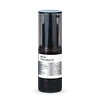What's inside
What's inside
 Key Ingredients
Key Ingredients

 Benefits
Benefits

 Concerns
Concerns

 Ingredients Side-by-side
Ingredients Side-by-side

Water
Skin Conditioning3-O-Ethyl Ascorbic Acid
Skin ConditioningTrehalose
HumectantDicaprylyl Carbonate
EmollientEthoxydiglycol
HumectantGlycerin
HumectantPropanediol
SolventDipropylene Glycol
HumectantHydroxyethyl Acrylate/Sodium Acryloyldimethyl Taurate Copolymer
Emulsion StabilisingPalmitoyl Proline
Skin ConditioningCitric Acid
BufferingSodium Citrate
BufferingXanthan Gum
EmulsifyingBisabolol
MaskingPhenoxyethanol
PreservativeDimethicone/Vinyl Dimethicone Crosspolymer
Skin ConditioningNymphaea Alba Flower Extract
Skin ConditioningPanthenol
Skin ConditioningSodium Metabisulfite
AntioxidantBHT
AntioxidantDisodium EDTA
Ethylhexylglycerin
Skin ConditioningSodium Hyaluronate
HumectantSilica
AbrasiveButylene Glycol
HumectantIsoceteth-10
EmulsifyingCaprylyl Glycol
EmollientGlyceryl Caprylate
EmollientPhenylpropanol
MaskingPalmitoyl Sh-Octapeptide-24 Amide
Skin ConditioningGlycolic Acid
BufferingLactic Acid
BufferingPolyvinyl Alcohol
Palmitoyl Sh-Tripeptide-5 Norisoleucyl Sh-Nonapeptide-1
Skin ConditioningWater, 3-O-Ethyl Ascorbic Acid, Trehalose, Dicaprylyl Carbonate, Ethoxydiglycol, Glycerin, Propanediol, Dipropylene Glycol, Hydroxyethyl Acrylate/Sodium Acryloyldimethyl Taurate Copolymer, Palmitoyl Proline, Citric Acid, Sodium Citrate, Xanthan Gum, Bisabolol, Phenoxyethanol, Dimethicone/Vinyl Dimethicone Crosspolymer, Nymphaea Alba Flower Extract, Panthenol, Sodium Metabisulfite, BHT, Disodium EDTA, Ethylhexylglycerin, Sodium Hyaluronate, Silica, Butylene Glycol, Isoceteth-10, Caprylyl Glycol, Glyceryl Caprylate, Phenylpropanol, Palmitoyl Sh-Octapeptide-24 Amide, Glycolic Acid, Lactic Acid, Polyvinyl Alcohol, Palmitoyl Sh-Tripeptide-5 Norisoleucyl Sh-Nonapeptide-1
Water
Skin Conditioning3-O-Ethyl Ascorbic Acid
Skin ConditioningGlycerin
HumectantAlpha-Arbutin
AntioxidantPentylene Glycol
Skin ConditioningArtemisia Capillaris Leaf Extract
Skin ConditioningCamellia Sinensis Leaf Extract
AntimicrobialMel Extract
MoisturisingPhenoxyethanol
PreservativeSodium Benzoate
MaskingCaffeine
Skin ConditioningHelianthus Annuus Sprout Extract
Skin ConditioningTerminalia Ferdinandiana Fruit Extract
AntioxidantChlorphenesin
AntimicrobialRubus Idaeus Fruit Extract
AstringentSodium Hydrosulfite
Tocopheryl Acetate
AntioxidantXanthan Gum
EmulsifyingButeth-3
SolventDaucus Carota Sativa Root Extract
Skin ConditioningFerulic Acid
AntimicrobialPolyacrylate Crosspolymer-6
Emulsion StabilisingTetrasodium EDTA
Arginine
MaskingHydrolyzed Algin
Sodium Hyaluronate
HumectantTributyl Citrate
SolventEthylhexylglycerin
Skin ConditioningHyaluronic Acid
HumectantHydrolyzed Hyaluronic Acid
HumectantHydrolyzed Sodium Hyaluronate
Skin ConditioningHydroxypropyltrimonium Hyaluronate
Potassium Hyaluronate
Skin ConditioningSodium Acetylated Hyaluronate
HumectantSodium Hyaluronate Crosspolymer
HumectantSodium Benzotriazolyl Butylphenol Sulfonate
UV AbsorberWater, 3-O-Ethyl Ascorbic Acid, Glycerin, Alpha-Arbutin, Pentylene Glycol, Artemisia Capillaris Leaf Extract, Camellia Sinensis Leaf Extract, Mel Extract, Phenoxyethanol, Sodium Benzoate, Caffeine, Helianthus Annuus Sprout Extract, Terminalia Ferdinandiana Fruit Extract, Chlorphenesin, Rubus Idaeus Fruit Extract, Sodium Hydrosulfite, Tocopheryl Acetate, Xanthan Gum, Buteth-3, Daucus Carota Sativa Root Extract, Ferulic Acid, Polyacrylate Crosspolymer-6, Tetrasodium EDTA, Arginine, Hydrolyzed Algin, Sodium Hyaluronate, Tributyl Citrate, Ethylhexylglycerin, Hyaluronic Acid, Hydrolyzed Hyaluronic Acid, Hydrolyzed Sodium Hyaluronate, Hydroxypropyltrimonium Hyaluronate, Potassium Hyaluronate, Sodium Acetylated Hyaluronate, Sodium Hyaluronate Crosspolymer, Sodium Benzotriazolyl Butylphenol Sulfonate
Ingredients Explained
These ingredients are found in both products.
Ingredients higher up in an ingredient list are typically present in a larger amount.
You might know this ingredient as Ethyl Ascorbic Acid, a more stable version of ascorbic acid.
Like other types of vitamin C, this ingredient has many benefits including reducing wrinkles, skin soothing, dark spot fading, and fighting against free radicals.
3-O-Ethyl Ascorbic Acid interferes with the process of skin darkening, helping to reduce hyperpigmentation. It also encourages the skin to produce more collagen.
Once applied, 3-O-Ethyl Ascorbic Acid is converted to Vitamin C deeper in the skin's layers. This process is slow but makes this ingredient more tolerable for skin.
The optimum pH range for this ingredient is 4 - 5.5
Learn more about 3-O-Ethyl Ascorbic AcidEthylhexylglycerin (we can't pronounce this either) is commonly used as a preservative and skin softener. It is derived from glyceryl.
You might see Ethylhexylglycerin often paired with other preservatives such as phenoxyethanol. Ethylhexylglycerin has been found to increase the effectiveness of these other preservatives.
Glycerin is already naturally found in your skin. It helps moisturize and protect your skin.
A study from 2016 found glycerin to be more effective as a humectant than AHAs and hyaluronic acid.
As a humectant, it helps the skin stay hydrated by pulling moisture to your skin. The low molecular weight of glycerin allows it to pull moisture into the deeper layers of your skin.
Hydrated skin improves your skin barrier; Your skin barrier helps protect against irritants and bacteria.
Glycerin has also been found to have antimicrobial and antiviral properties. Due to these properties, glycerin is often used in wound and burn treatments.
In cosmetics, glycerin is usually derived from plants such as soybean or palm. However, it can also be sourced from animals, such as tallow or animal fat.
This ingredient is organic, colorless, odorless, and non-toxic.
Glycerin is the name for this ingredient in American English. British English uses Glycerol/Glycerine.
Learn more about GlycerinPhenoxyethanol is a preservative that has germicide, antimicrobial, and aromatic properties. Studies show that phenoxyethanol can prevent microbial growth. By itself, it has a scent that is similar to that of a rose.
It's often used in formulations along with Caprylyl Glycol to preserve the shelf life of products.
Sodium Hyaluronate is hyaluronic acid's salt form. It is commonly derived from the sodium salt of hyaluronic acid.
Like hyaluronic acid, it is great at holding water and acts as a humectant. This makes it a great skin hydrating ingredient.
Sodium Hyaluronate is naturally occurring in our bodies and is mostly found in eye fluid and joints.
These are some other common types of Hyaluronic Acid:
Learn more about Sodium HyaluronateWater. It's the most common cosmetic ingredient of all. You'll usually see it at the top of ingredient lists, meaning that it makes up the largest part of the product.
So why is it so popular? Water most often acts as a solvent - this means that it helps dissolve other ingredients into the formulation.
You'll also recognize water as that liquid we all need to stay alive. If you see this, drink a glass of water. Stay hydrated!
Learn more about WaterXanthan gum is used as a stabilizer and thickener within cosmetic products. It helps give products a sticky, thick feeling - preventing them from being too runny.
On the technical side of things, xanthan gum is a polysaccharide - a combination consisting of multiple sugar molecules bonded together.
Xanthan gum is a pretty common and great ingredient. It is a natural, non-toxic, non-irritating ingredient that is also commonly used in food products.
Learn more about Xanthan Gum